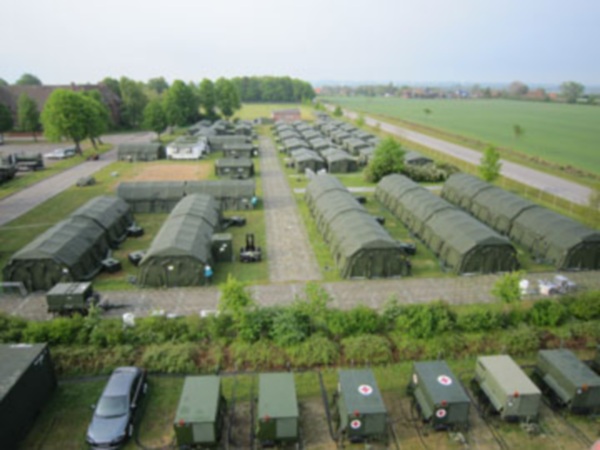D.C. expanding public surveillance camera net
Big Brother may already be watching you in the District, and he will soon have a lot more eyes trained in your direction.
The city’s homeland security agency is planning to add thousands of security cameras from private businesses around the nation’s capital and the Metro system to the thousands of electronic eyes that authorities are already monitoring 24/7.
D.C.’s Homeland Security and Emergency Management Agency has already centralized the feeds from more than 4,500 cameras operated by the District’s department of transportation and school system. Those feeds are watched around the clock by officials from those departments who sit together in homeland security’s Joint All-Hazards Operation Center.
By bringing feeds from thousands more cameras to the central watching room through links to cameras at businesses such as banks, corner stores and gas stations, the District is joining other big cities like London, New York and Baltimore that in recent years have turned to cameras to fight crime and terrorism. But critics worry the District’s government might be going too far.
“The D.C. effort to link public and private watching capabilities might be viewed as excessive,” said Jeffrey Rosen, a law professor at George Washington University who studies the balance between security and civil liberties. “It would make it hard to find a place in the city where people aren’t being watched by cameras.”
“It sounds like Big Brother to me,” Maryland resident James Dewitt said Wednesday on the streets of downtown Washington, referencing George Orwell’s novel foreseeing a society oppressed by a government that tracks everyone. “We’re heading to ‘1984.’ It’s 2011, but we’re heading to 1984.”
Robyn Johnson, a spokeswoman from HSEMA, told The Washington Examiner that “the program has not expanded to include private businesses.” But, “We continue to explore this in a deliberative way.”
A plan for 2011 submitted to the city administrator by HSEMA says the agency plans to centralize cameras at private businesses and those run by Metro and the D.C. Housing Authority. The plan doesn’t have a timeline, and Johnson said there isn’t one.
Homeland security says the centralized camera system is designed to be used to raise “situational awareness” during “developing significant events” like the shooting at the U.S. Holocaust Memorial Museum in 2009 or the terrorist attacks of Sept. 11, 2001.
When it was started in spring 2008, the program immediately met resistance from the D.C. Council. Some council members worried that the closed-circuit television system was put together too quickly and without consideration of how effective it would be in reducing crime or preventing terrorism.
At-large Councilman Phil Mendelson, who oversees the homeland security agency, still has those concerns.
“My concern about these cameras has always been that there’s no evidence they reduce crime,” Mendelson said. “If HSEMA intends to put more staff on to monitor these cameras, it would not be a good use of resources.”
Mendelson added that “although one doesn’t have much of a right of privacy on a Metro platform … it could change when you’re inside a bank, and if HSEMA were looking at a bank statement.”
Johnson said the agency is developing regulations to protect civil liberties.
Homeland security currently operates under the same series of regulations the D.C. Council adopted for the cameras used by the police department, which are run separately from HSEMA’s cameras.
Those regulations make it illegal for a camera to be focused on literature being carried by someone in a protest. They also prevent footage from being stored for more than 10 days, unless it captured a crime being committed or questionable police action.
Washington Examiner January 21, 2011

